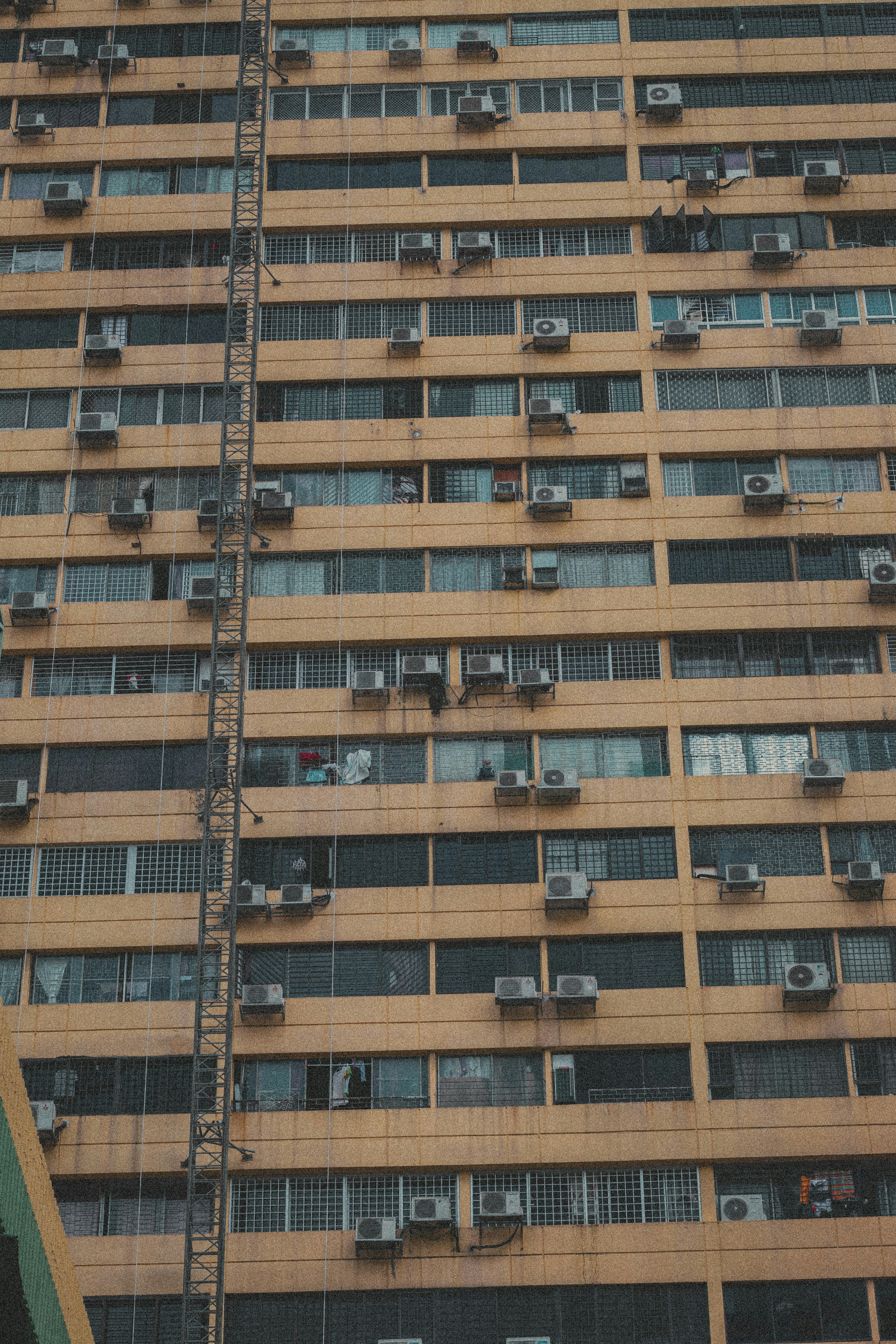Where is legal to install air conditioning?
Introduction: Four concepts related to outdoor air conditioning
Before entering the hottest months it is convenient to know how to install air conditioning in a legal way. It is always good to start by defining the technical concepts related to the subject matter
- Facade: Face visible from the the vertical walls outside that conclude a building.
- Vacuum: Opening located in a wall lock, facade or other building element.
- Carpentry: Truss of woods - or other materials - that are the closing of a void.
- Solar protection: A carpentry element whose function is to prevent sun's rays direct incidence.
Part One: Criteria for the placement of air conditioners in Barcelona
The rooftop is the proper area for installation.
In case this is not possible, the following situations are admissible:
a) On the balcony slab provided that:
- It is behind the railing and below its upper limit.
- It does not spoil the facade and is separated.
- There are no ducts seen by the facade. The installations passage must be made through the interior of the building.
b) In the building interior provided that:
- It is part of an integration project that takes into account the original composition of the facade.
- The air conditioning system instalation does not change the windows composition or the original materials. Neither carpentry nor sun protection must be damaged.
- The device must be concealed.
The passage of installations must be made through the interior of the building. This is admissible:
c) On the façade, the window sills or in front of the window frames.
.
d) In the exterior space of setbacks or semi-open bodies with a global project that integrates them within a furniture element are valid placed:
- On the facade, the window sills or in front of the carpentry.
e) To the exterior and visible part of setbacks or semi-open protruding bodies if not in conditions 2.a or 2.c.
f) In the interior of the facade, behind the carpentry, with the following conditions:
- That it is part of an integration project that takes into account the facade original composition .
- That the device is concealed and integrated behind a grille.
g) On the facade or in front of the carpentry.
They shall have the same consideration as any other space visible from the street.
The same criteria apply as for the main façade. However, solutions where the device is integrated into a furnishing element may also be admitted, provided that the overall project respects the original composition.
Among all this information, two guiding principles must be underlined:
Firstly, Environmental Ordinance must be respected.
Secondly, the application of these criteria will have to be compatible with the performance of the Building Ordinance.
To the façade of the interior island courtyard:
1. Composition in facade plan.
2. Composition in book volumetry
3. First floors
4. Porch and private spaces for public use
Part Two: Why does the City Council set the requirements for a facility in a private building?
The question implies that a private building cannot be subject to any kind of public policy. This approach in the 21st century is completely obsolete.
In this case, public policy is conveyed through the Ordinance on the Uses of the Urban Landscape made by Barcelona City Council (hereinafter OUUL). However, it is necessary to remember that the Catalan Civil Code (hereinafter CCC) orders to make an air conditioning installation project which has to be presented at the owners' meeting. Thus, article 553-36-3 of the CCC establishes that: "anyone who wants to carry out a work in its privative element has to inform the presidency or community administration (...) if the work affects common elements, the agreement of the meeting of owners is compulsory.
Having said this, we return to the OUUL to understand its purpose: "to ensure the architectural composition of the facades mainteinance (...) in the urban fabric as a whole (...)".
In addition to seeking architectural homogeneity there is a more indirect reason for public intervention: low voltage installations that feed air conditioning units can be a danger to the safety of people by causing fires. Do you want to know more about it? Take a glance at this link .
In the specific case of listed buildings these have to be treated individually according to their specific characteristics and taking into account the guidelines of the existing catalog sheet in each case.
The placement will have to be on the roof of the building. In this link you can see all the OUUL articles.
Annex: Is air conditioning the only option to cool your home?
No. Although this text has been based on detailing what is demanded and what forbidded the Barcelona town regulations when putting an external artificial ventilation machine to our floor, the truth is that installing cooling can be a cause for doubt at least from two points of view:
On the one hand the economic because the already high energy prices will rise even more in case of opting for air conditioners.
On the other the ecological because the cooling appliances emit: Carbon dioxide, Hydrofluorocarbons and additional pollutants from burning fossil fuels.
In this regard, the fifth report of the Intergovernmental Panel on Climate Change noted: "the need for more efficient refrigeration systems designed to work with low global warming potential refrigerants (GWP) that must be supported by innovative approaches to energy generation or supply."
Faced with the negative externalities of air conditioning, it is more timely than ever to recover this text: How to cool your home without air conditioning.
Are you worried about protecting yourself from high temperatures outside as well? We explain it here.
At Finques Feliu we are at your side.
